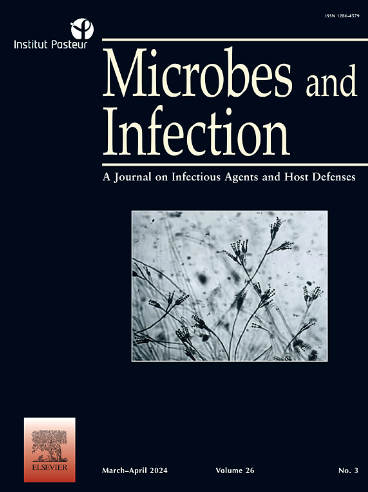The transactivation of human endogenous retroviruses is associated with HIV-1 reservoir, lymphocyte activation and low CD4 count in virologically suppressed PLWH
IF 2.7
4区 医学
Q3 IMMUNOLOGY
引用次数: 0
Abstract
In the context of long-term therapy in virologically suppressed people living with HIV-1 (PLWH), the identification of new biomarkers associated with immuno-virological discordance, and the risk of disease progression is needed. Herein we investigated HERVs expression in association with immuno-virological discordance parameters for the identification of novel markers for the clinical monitoring of virologically suppressed PLWH. It is known the human endogenous retroviruses (HERVs), relics of ancestral exogenous retroviral infections comprising 8 % of human genome, could be reactivated by exogenous viruses including HIV-1. The study included 31 virologically suppressed PLWH and 10 healthy donors; blood HIV-DNA levels and residual plasma viremia were quantified by droplet digital-PCR, the expression of HERVs by RT-Real time PCR, and immunophenotyping by flow cytometry. The results revealed a dynamic association of HERVs with several virological and immunological parameters such as the HIV-1 reservoir, CD4 cell count, CD4 nadir and with CD8 and CD19 lymphocyte activation. In an era of searching innovative biomarkers for people living with HIV-1, the interconnection of HERVs with the HIV-1 reservoir and lymphocyte activation opens to further investigation on HERVs role in persistent immune activation in virologically suppressed PLWH, proposing them as potential new markers for clinical monitoring.
在病毒学抑制的PLWH中,人内源性逆转录病毒的反激活与HIV-1库、淋巴细胞激活和低CD4计数有关。
在病毒学抑制的HIV-1感染者(PLWH)长期治疗的背景下,需要鉴定与免疫-病毒学不一致和疾病进展风险相关的新生物标志物。在此,我们研究了herv表达与免疫病毒学不一致参数的关系,以鉴定用于临床监测病毒学抑制PLWH的新标记。众所周知,人类内源性逆转录病毒(herv)是祖先外源性逆转录病毒感染的遗迹,占人类基因组的8%,可以被包括HIV-1在内的外源性病毒重新激活。该研究包括31名病毒学抑制的PLWH和10名健康供体;采用液滴数字PCR法检测小鼠血液HIV-DNA水平和残留血浆病毒血症,RT-Real - time PCR法检测小鼠herv表达,流式细胞术检测小鼠免疫表型。结果显示,herv与若干病毒学和免疫学参数(如HIV-1库、CD4细胞计数、CD4最低点以及CD8+和CD19淋巴细胞活化)存在动态关联。在为HIV-1感染者寻找创新生物标志物的时代,herv与HIV-1储存库和淋巴细胞激活的相互联系为进一步研究herv在病毒学抑制的PLWH中持续免疫激活中的作用开辟了空间,并提出了它们作为临床监测的潜在新标志物。
本文章由计算机程序翻译,如有差异,请以英文原文为准。
求助全文
约1分钟内获得全文
求助全文
来源期刊

Microbes and Infection
医学-病毒学
CiteScore
12.60
自引率
1.70%
发文量
90
审稿时长
40 days
期刊介绍:
Microbes and Infection publishes 10 peer-reviewed issues per year in all fields of infection and immunity, covering the different levels of host-microbe interactions, and in particular:
the molecular biology and cell biology of the crosstalk between hosts (human and model organisms) and microbes (viruses, bacteria, parasites and fungi), including molecular virulence and evasion mechanisms.
the immune response to infection, including pathogenesis and host susceptibility.
emerging human infectious diseases.
systems immunology.
molecular epidemiology/genetics of host pathogen interactions.
microbiota and host "interactions".
vaccine development, including novel strategies and adjuvants.
Clinical studies, accounts of clinical trials and biomarker studies in infectious diseases are within the scope of the journal.
Microbes and Infection publishes articles on human pathogens or pathogens of model systems. However, articles on other microbes can be published if they contribute to our understanding of basic mechanisms of host-pathogen interactions. Purely descriptive and preliminary studies are discouraged.
 求助内容:
求助内容: 应助结果提醒方式:
应助结果提醒方式:


